Preventative or symptomatic dust control?
Preventative dust control
This attempts to stops dust becoming airborne before it becomes a problem. A spray is applied to the surface that is liable to generate dust, wetting it. The moisture prevents dust from forming.
When suppressing dust by wetting one needs to consider how much moisture is acceptable. If too much wetting is applied not only is it wasteful of water but also this may produce undesirable sludge. Obviously if too little moisture is applied then the dust may not be suppressed. So a balance needs to be found.
The sprays required for preventative dust control generally just need to deliver a measured amount of water per minute to the surface in question. Unlike symptomatic dust control, droplet size is not of paramount importance. Typically full cone nozzle spray patterns will be used to wet the area that needs treating. Axial whirl design full cone nozzles provide a very even distribution of spray and this is generally desirable in dust prevention applications so as to avoid areas of over wetting. Alternatively flat fan nozzles can be used in spray bars for preventative dust control on a conveyor system or mounted on vehicles prone to creating dust.
Please click on the nozzle boxes below for full datasheets
Full cone spray nozzles for treating an area
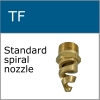

Fan spray nozzles for treating a moving conveyor or to be mounted on vehicles
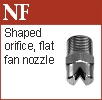
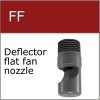
Symptomatic dust control
This method attempts to remove dust once it is already airborne by spraying a finely atomised mist so that the droplets of the spray will hit dust particles and remove them. The basic principle of these systems is that water droplets will merge with dust particles forming an agglomerate which will then fall under gravity. The water will then evaporate depositing the dust particle back onto the surface.
This is usually only done when it is not practical to control dust preventatively. One example would be filling dump trucks from a pile with a loader. It is not practical to soak the pile such that the entire pile is damp, but a few well-placed nozzles around a filling point can reduce dust production significantly. Alternatively, it might be the case that the surface being treated cannot be contaminated with any significant levels of water.
The sprays required for effective symptomatic dust control need to be fairly finely atomised with a mean droplet size similar to the dust particles they are trying to suppress (see the droplet size matching section in this application page for more details).


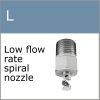
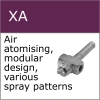
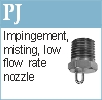
Diagram showing preventative vs symptomatic dust control
